Filter by
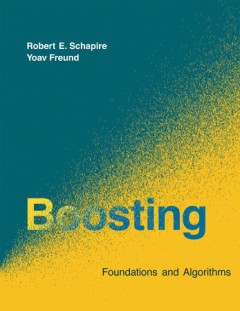
Boosting: Foundations and Algorithms
A remarkably rich theory has evolved around boosting, with connections to a range of topics including statistics, game theory, convex optimization, and information geometry. Boosting algorithms have also enjoyed practical success in such fields as biology, vision, and speech processing. At various times in its history, boosting has been perceived as mysterious, controversial, even paradoxical. …
- Edition
- -
- ISBN/ISSN
- 9780262301183
- Collation
- 1 online resource (xv, 526 pages) :illustrations
- Series Title
- -
- Call Number
- -
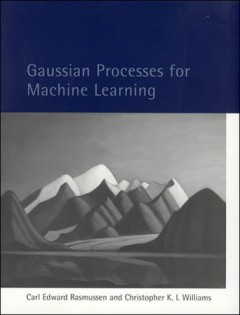
Gaussian processes for machine learning
"Gaussian processes (GPs) provide a principled, practical, probabilistic approach to learning in kernel machines. GPs have received increased attention in the machine-learning community over the past decade, and this book provides a long-needed systematic and unified treatment of theoretical and practical aspects of GPs in machine learning. The treatment is comprehensive and self-contained, tar…
- Edition
- -
- ISBN/ISSN
- 9780262256834
- Collation
- 1 online resource (xviii, 248 pages) : illustrations.
- Series Title
- -
- Call Number
- 510 RAS g
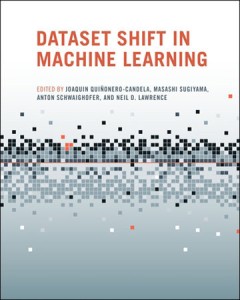
Dataset Shift in Machine Learning
This work is an overview of recent efforts in the machine learning community to deal with dataset and covariate shift which occurs when test and training inputs and outputs have different distributions.OCLC-licensed vendor bibliographic record.
- Edition
- -
- ISBN/ISSN
- 9780262255103
- Collation
- 1 online resource (xv, 229 pages) :illustrations.
- Series Title
- -
- Call Number
- -

Deep learning
OCLC-licensed vendor bibliographic record.
- Edition
- -
- ISBN/ISSN
- 9780262354899
- Collation
- 1 online resource (272 pages).
- Series Title
- -
- Call Number
- -
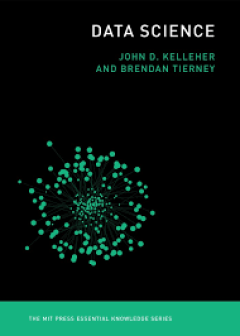
Data science
A concise introduction to the emerging field of data science, explaining its evolution, relation to machine learning, current uses, data infrastructure issues, and ethical challenges.OCLC-licensed vendor bibliographic record.
- Edition
- -
- ISBN/ISSN
- 9780262347020
- Collation
- 1 online resource (xi, 264 pages) :illustrations.
- Series Title
- -
- Call Number
- -
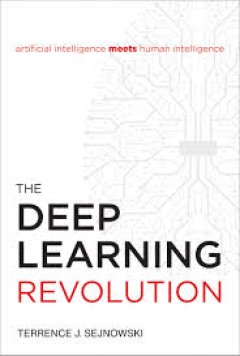
The deep learning revolution
How deep learning-from Google Translate to driverless cars to personal cognitive assistants-is changing our lives and transforming every sector of the economy. The deep learning revolution has brought us driverless cars, the greatly improved Google Translate, fluent conversations with Siri and Alexa, and enormous profits from automated trading on the New York Stock Exchange. Deep learning netwo…
- Edition
- -
- ISBN/ISSN
- 9780262346825
- Collation
- 1 online resource.
- Series Title
- -
- Call Number
- -
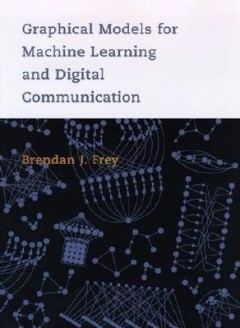
Graphical models for machine learning and digital communication
"A Bradford book."Content DescriptionOCLC-licensed vendor bibliographic record.
- Edition
- -
- ISBN/ISSN
- 0585024413
- Collation
- 1 online resource (xiii, 195 pages) : illustrations
- Series Title
- Adaptive Computation and Machine Learning series
- Call Number
- -

How to build a person : a prolegomenon
"A Bradford book."Pollock describes an exciting theory of rationality and its partial implementation in OSCAR, a computer system whose descendants will literally be persons.Building a person has been an elusive goal in artificial intelligence. This failure, John Pollock argues, is because the problems involved are essentially philosophical; what is needed for the construction of a person is a p…
- Edition
- -
- ISBN/ISSN
- 0585336997
- Collation
- 1 online resource (xi, 189 pages) : illustrations
- Series Title
- -
- Call Number
- 001 POL h
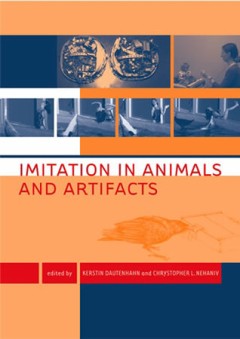
Imitation in animals and artifacts
"A Bradford book."Papers presented at a meeting held in Edinburgh, Scotland, Apr. 7-9, 1999.The effort to explain the imitative abilities of humans and other animals draws on fields as diverse as animal behavior, artificial intelligence, computer science, comparative psychology, neuroscience, primatology, and linguistics. This volume represents a first step toward integrating research from thos…
- Edition
- -
- ISBN/ISSN
- 9780262271219
- Collation
- 1 online resource (xv, 607 pages) : illustrations.
- Series Title
- Complex Adaptive Systems
- Call Number
- 301 IMI
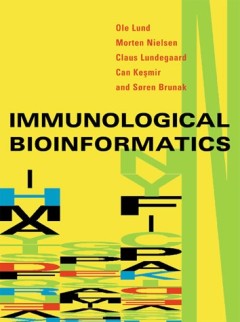
Immunological bioinformatics
"This book offers a description of bioinformatics techniques as they are applied to immunology, including a succinct account of the main biological concepts for students and researchers with backgrounds in mathematics, statistics, and computer science as well as explanations of the new data-driven algorithms in the context of biological data that will be useful of immunologists, biologists, and…
- Edition
- -
- ISBN/ISSN
- 9780262323338
- Collation
- 1 online resource (xii, 296 pages, 24 unnumbered pages of plates) : illustrations (some color).
- Series Title
- Computational Molecular Biology
- Call Number
- 001 LUN i
 Computer Science, Information & General Works
Computer Science, Information & General Works  Philosophy & Psychology
Philosophy & Psychology  Religion
Religion  Social Sciences
Social Sciences  Language
Language  Pure Science
Pure Science  Applied Sciences
Applied Sciences  Art & Recreation
Art & Recreation  Literature
Literature  History & Geography
History & Geography